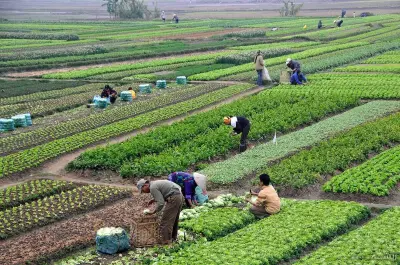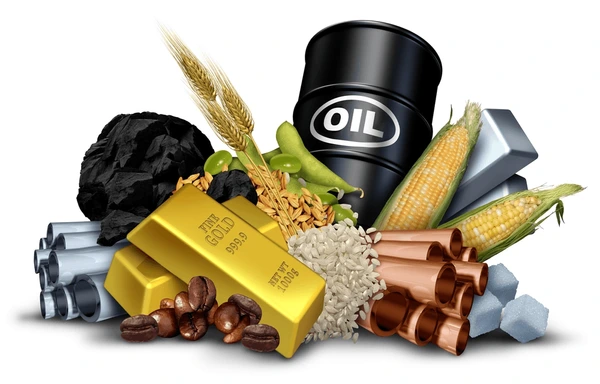Livestock trade in India - Exporting livestock to India
- Anbar Asia
- Trade with India
- India's Crops market
- Livestock trade in India
- India
 Gherkin pickleCanned Foods, Pickles
Gherkin pickleCanned Foods, Pickles - India
 Gem stonesTurquoise, Ruby, Topaz, Emerald, Spinel, Pearl, Tanzanite
Gem stonesTurquoise, Ruby, Topaz, Emerald, Spinel, Pearl, Tanzanite - India
 Antic Stones With Mixture of many metalsGold, Zinc, Silver, Copper
Antic Stones With Mixture of many metalsGold, Zinc, Silver, Copper - India
 Spices, Cashew Nuts and GrainsGroceries, Nuts, Spices
Spices, Cashew Nuts and GrainsGroceries, Nuts, Spices - India
 fruits and vegetablesSpices
fruits and vegetablesSpices - India

 Export quality Cashew nuts all grade, Spice, Green Coffee beans from IndiaTea And Coffee, Nuts, Spices
Export quality Cashew nuts all grade, Spice, Green Coffee beans from IndiaTea And Coffee, Nuts, Spices - India
 NATURAL EMERALD RUBY SAPPHIRE ONLYRuby, Diamond, Topaz, Emerald
NATURAL EMERALD RUBY SAPPHIRE ONLYRuby, Diamond, Topaz, Emerald - India
 HandicraftAntique, Carpet, Decorative Arts, Furniture
HandicraftAntique, Carpet, Decorative Arts, Furniture - India
 Spices, Oil seed, Grains ExporterGroceries, Canned Foods, Spices
Spices, Oil seed, Grains ExporterGroceries, Canned Foods, Spices - India
 spicesSpices
spicesSpices - India
 DIAMOND WHOLESALER & JEWELLERY MANUFACTURING FOR CONTACT https://wa.me/messDiamond
DIAMOND WHOLESALER & JEWELLERY MANUFACTURING FOR CONTACT https://wa.me/messDiamond - India
 Fruits and Vegetables specially BananaSpices, Vegetables, Fruit
Fruits and Vegetables specially BananaSpices, Vegetables, Fruit - India
 Raw peanut kernels and blanched peanut kernelsCeramic Tile, Nuts
Raw peanut kernels and blanched peanut kernelsCeramic Tile, Nuts - India
 Textile, dental staffHerbal Distillate
Textile, dental staffHerbal Distillate - India
 Shree Fire ServicesGold, Aluminum, Copper
Shree Fire ServicesGold, Aluminum, Copper - India
 Chlorine Gas,Sodium Hypochlorite,Liquor Ammonia / Ammonia SolutionAmmonia, Chlorine
Chlorine Gas,Sodium Hypochlorite,Liquor Ammonia / Ammonia SolutionAmmonia, Chlorine - India
 Omega GraphiteCement, Ceramic Tile, Concrete Blocks
Omega GraphiteCement, Ceramic Tile, Concrete Blocks - India
 POLYPROPYLENEPolypropylene
POLYPROPYLENEPolypropylene  hhj11 months agoIndia
hhj11 months agoIndia قیرBitumen
قیرBitumen- India
 Clay
Clay - India
 Gems stones
Gems stones - India
 STONEHAVENGranite, Marble, Travertine, Quartzite, Sandstone
STONEHAVENGranite, Marble, Travertine, Quartzite, Sandstone - India
 I sale all type of gems stone which stone is need jst whats app
I sale all type of gems stone which stone is need jst whats app



 Visgo Enterprises6 days ago
Visgo Enterprises6 days ago Gherkin pickleCanned Foods, Pickles
Gherkin pickleCanned Foods, Pickles Karim KIORA AMOREZ1 weeks ago
Karim KIORA AMOREZ1 weeks ago Gem stonesTurquoise, Ruby, Topaz, Emerald, Spinel, Pearl, Tanzanite
Gem stonesTurquoise, Ruby, Topaz, Emerald, Spinel, Pearl, Tanzanite Sandy1 months ago
Sandy1 months ago Antic Stones With Mixture of many metalsGold, Zinc, Silver, Copper
Antic Stones With Mixture of many metalsGold, Zinc, Silver, Copper Srivishwaa Vyapar2 months ago
Srivishwaa Vyapar2 months ago Spices, Cashew Nuts and GrainsGroceries, Nuts, Spices
Spices, Cashew Nuts and GrainsGroceries, Nuts, Spices jigar patel5 months ago
jigar patel5 months ago fruits and vegetablesSpices
fruits and vegetablesSpices BISWAJITH KIZHAKKETHARA5 months ago
BISWAJITH KIZHAKKETHARA5 months ago
 Export quality Cashew nuts all grade, Spice, Green Coffee beans from IndiaTea And Coffee, Nuts, Spices
Export quality Cashew nuts all grade, Spice, Green Coffee beans from IndiaTea And Coffee, Nuts, Spices NATURAL GEMS INTERNATIONAL6 months ago
NATURAL GEMS INTERNATIONAL6 months ago NATURAL EMERALD RUBY SAPPHIRE ONLYRuby, Diamond, Topaz, Emerald
NATURAL EMERALD RUBY SAPPHIRE ONLYRuby, Diamond, Topaz, Emerald Gemstone7 months ago
Gemstone7 months ago HandicraftAntique, Carpet, Decorative Arts, Furniture
HandicraftAntique, Carpet, Decorative Arts, Furniture KRUPA EXPORTER7 months ago
KRUPA EXPORTER7 months ago Spices, Oil seed, Grains ExporterGroceries, Canned Foods, Spices
Spices, Oil seed, Grains ExporterGroceries, Canned Foods, Spices ALISONS GENERAL TRADING LLP7 months ago
ALISONS GENERAL TRADING LLP7 months ago spicesSpices
spicesSpices FAIZAN ZAVERI8 months ago
FAIZAN ZAVERI8 months ago DIAMOND WHOLESALER & JEWELLERY MANUFACTURING FOR CONTACT https://wa.me/messDiamond
DIAMOND WHOLESALER & JEWELLERY MANUFACTURING FOR CONTACT https://wa.me/messDiamond Medsin8 months ago
Medsin8 months ago Fruits and Vegetables specially BananaSpices, Vegetables, Fruit
Fruits and Vegetables specially BananaSpices, Vegetables, Fruit DHAVAL FROM Q LAND AGRI WORLD8 months ago
DHAVAL FROM Q LAND AGRI WORLD8 months ago Raw peanut kernels and blanched peanut kernelsCeramic Tile, Nuts
Raw peanut kernels and blanched peanut kernelsCeramic Tile, Nuts Soha chTterjee9 months ago
Soha chTterjee9 months ago Textile, dental staffHerbal Distillate
Textile, dental staffHerbal Distillate Shree Fire Services10 months ago
Shree Fire Services10 months ago Shree Fire ServicesGold, Aluminum, Copper
Shree Fire ServicesGold, Aluminum, Copper Steelmangases pvt ltd10 months ago
Steelmangases pvt ltd10 months ago Chlorine Gas,Sodium Hypochlorite,Liquor Ammonia / Ammonia SolutionAmmonia, Chlorine
Chlorine Gas,Sodium Hypochlorite,Liquor Ammonia / Ammonia SolutionAmmonia, Chlorine Omega Graphite10 months ago
Omega Graphite10 months ago Omega GraphiteCement, Ceramic Tile, Concrete Blocks
Omega GraphiteCement, Ceramic Tile, Concrete Blocks Rakesh Kumar11 months ago
Rakesh Kumar11 months ago POLYPROPYLENEPolypropylene
POLYPROPYLENEPolypropylene hhj11 months ago
hhj11 months ago قیرBitumen
قیرBitumen Klay chem mining company12 months ago
Klay chem mining company12 months ago Clay
Clay Akhter Ali13 months ago
Akhter Ali13 months ago Gems stones
Gems stones Sarvesh K18 months ago
Sarvesh K18 months ago STONEHAVENGranite, Marble, Travertine, Quartzite, Sandstone
STONEHAVENGranite, Marble, Travertine, Quartzite, Sandstone Mir murtuza hussain19 months ago
Mir murtuza hussain19 months ago I sale all type of gems stone which stone is need jst whats app
I sale all type of gems stone which stone is need jst whats app
















